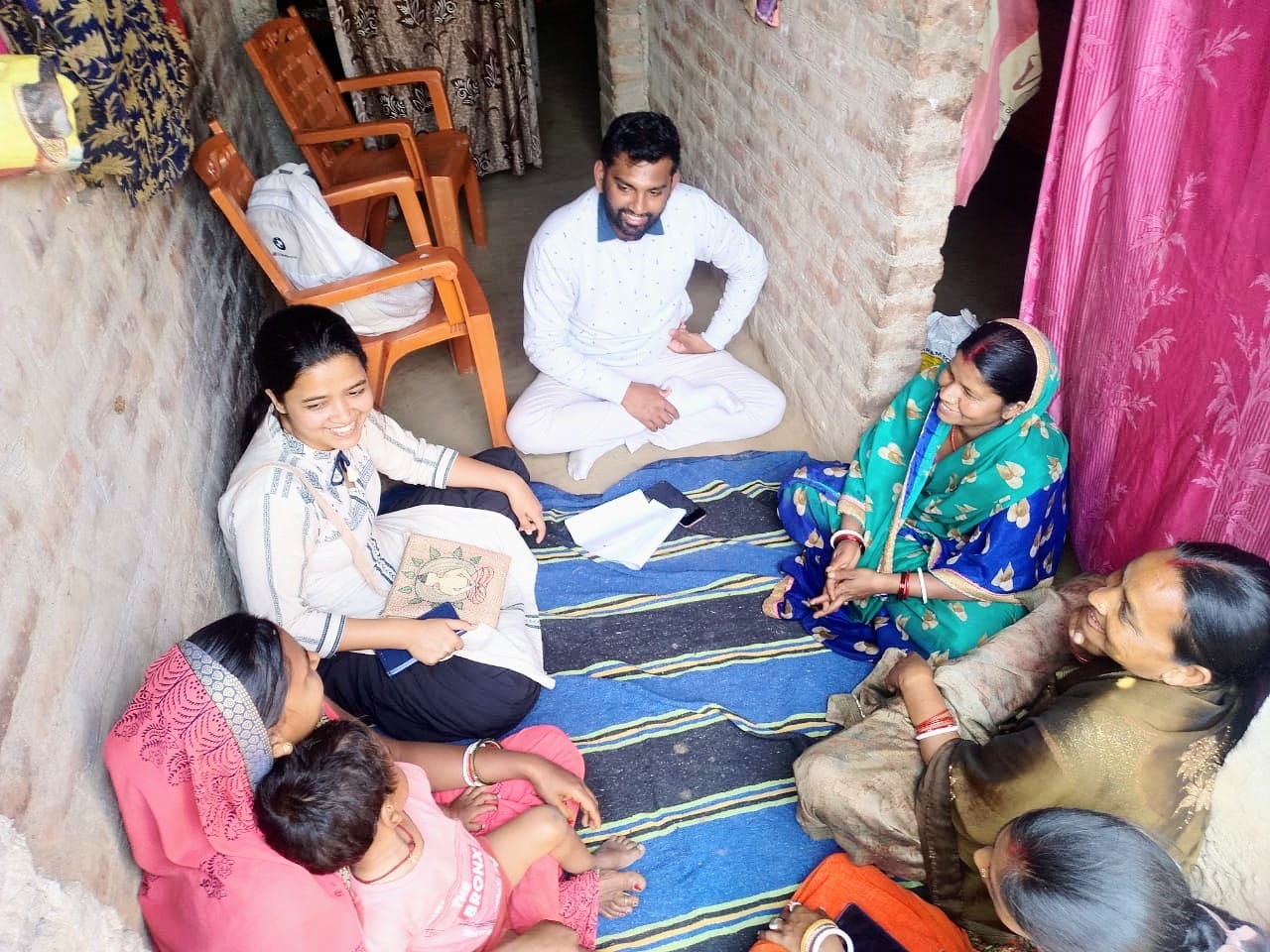
Working Paper
How Recife responded to the challenge of learning deficit...
May 12th 2025
School closures during COVID-19 caused learning losses worldwide, often compoundin...
Read MoreIn March 2022, I visited Karn Bhumi, a women-owned farmer producer company promoted by the Self-Employed Women’s Association Bharat (SEWA Bharat) in Bihar, to conduct a survey among their shareholders, board members, and staff. The motivation for surveying these women about agency and decision-making was twofold. First, we hoped to deconstruct the different dimensions of agency, restrictions, and freedoms they feel in decision-making depending on their shifting role in society and the environment they operate in. Second, we wanted to improve our methods to probe the layers of these responses and understand the motivations behind such decision-making patterns.
Karn Bhumi operates in the Bhagalpur and Munger districts of Bihar and has a membership of about 700 SEWA women. SEWA Bharat provides technical assistance to Karn Bhumi to scale and reach financial sustainability. Like all enterprises promoted by SEWA, it is owned by women and its activities and governance are rooted in Gandhian principles.
⚬ ⚬ ⚬
I began by asking women how they often travel within their own village, like going to the nearby Primary Health Center, Panchayat Bhawan (office of the local village government), for SEWA work, or for meeting their friends. In such cases, we intend to understand whether the women always need to ask for permission (either from their husbands or parents) and whether someone needs to accompany them.
There were a variety of responses to this question. Some women suggested that now that they are old enough, they simply inform their husbands/in-laws about wherever they are going inside the village, but they don’t need to ask for permission. One of the respondents mentioned that after getting married she could not even go out within her own village without her husband accompanying her. While some women seemed indifferent to having someone to accompany them, others said that it is always fun to have someone with you.
The women shared that they need to inform their husbands and family members and ask for permission when it comes to going outside the village for work purposes. However, most women do not need anyone to accompany them for this. Whenever they need someone, they typically reach out to their other fellow SEWA members in their own village. They also attend board meetings on their own or travel to other districts for meetings along with one or two SEWA members from their village. There were mixed reactions to doing work-related things alone. On the one hand, some preferred it and said it makes them feel empowered. On the other hand, some said that even though they can do their work and travel alone, they would prefer it if they did not have to do work-related things alone.
All of them said that they can go to their nearby markets alone and they often do. One of them had an interesting take on this. She mentioned that she goes to the market alone only for SEWA purposes such as getting quotations for the price of seeds and cattle feed from vendors, and never goes to the market for her household purposes. This is because she did not want an added responsibility and would prefer if her husband went to the market for any other household-related purposes. For the women, empowerment was more than just being able to work, it also involved men sharing the responsibility for household activities which are traditionally ascribed to women. One board member mentioned that she would leave for the market early in the morning to sell her produce and come back home at 10 pm alone. She felt safe because even at 10 pm that road was bustling with people.
For the women, empowerment was more than just being able to work, it also involved men sharing the responsibility for household activities which are traditionally ascribed to women.
Interestingly I heard that everyone goes to their native place frequently and often alone. I inquired further and got to know that their native places are pretty close by (3-5 miles range). Even in the case of one respondent whose native place was the furthest (18 miles away), there seemed to be no issue in her going there alone. When it came to going to a local festival, they quickly corrected me and said, “Why would someone in their right mind go to a local fair or festival alone?”
⚬ ⚬ ⚬
All the women I interviewed were able to make decisions about small purchases without consulting their husbands and family members. While some women preferred financial arrangements without any gender roles, others said they preferred to have a clear division of labour. For example, one woman said that it is clearly her husband’s responsibility to get groceries from the market, even if she can do it herself. In the case of large purchases, everyone emphasized that they made these decisions in consultation with their husbands and family members.
All the women I interviewed had their own bank accounts but only one of them knew how to use an ATM card to withdraw money. Most women knew how to withdraw money by filling out forms in a bank. The women would always inform their husbands about how much they withdraw from their own accounts. Savings seems to be either a shared responsibility or primarily the woman’s responsibility. The shared part emerges from the fact that they both need to save for future goals such as building a house, getting their children educated or marrying off their children.
⚬ ⚬ ⚬

One aspect that stood out during my interviews was SEWA’s role in moving beyond traditional gender roles like either working on their farm, doing household chores and rearing cattle. Some women suggested that SEWA has supported them to start developing a sense of agency inside their household, which they did not have before. The field supervisors that I interviewed spoke about how SEWA provided a purpose that they could talk about with their husband/family and then travel and see the world outside their village and district. There are hardly any jobs available in their vicinity which allow them to be a part of an organization that’s run solely by women and then offers them a chance to have a fixed income. The job has also helped them to fulfil their household responsibilities by enabling them to bring additional income and support. The inter-state travel opportunities to attend SEWA workshops have been empowering to most women who had never left their state before working for SEWA. Most importantly, SEWA has helped them improve their digital skills from a very low base. The field supervisors can now set up and attend video calls and send records of sale purchases online.
⚬ ⚬ ⚬
The discussion about agency and decision-making among SEWA members has taught us quite a few key lessons about how to measure and record the different facets of women’s agency in a more comprehensive manner.
First, we learnt the importance of asking more open-ended questions that elicit a variety of responses rather than seeking direct evidence on empowerment. Consider the requirement of permission from their husband, as an example. Many women expressed how the nature and the need of seeking permission has changed over their own lifetime.
Second, we also learnt how it is critical not to make implicit assumptions as we ask questions. For instance, in the context of this exercise, questions should not assume a specific nature of the division of labour in households with empowered women—women have developed a division of labour with their husbands that suit their needs over time, and all of these models are emerging from a place of empowerment.
Third, we learnt that understanding women’s agency is also about asking questions that are appropriate to their context. While saving may be an individual responsibility that women only inform spouses about, large purchases are a type of decision that they emphasize must be made collectively.
Finally, in terms of improving the current methodology that is being used, one important takeaway is to go beyond simply asking women about participating in the household, and also asking how much they can influence these decisions within the household.
[1] This article is based on the work Imago Global Grassroots is currently engaged in on the design, functioning, and adaptive evaluation of an enterprise support system to support the women-owned enterprises of SEWA in India (Project MOVE).